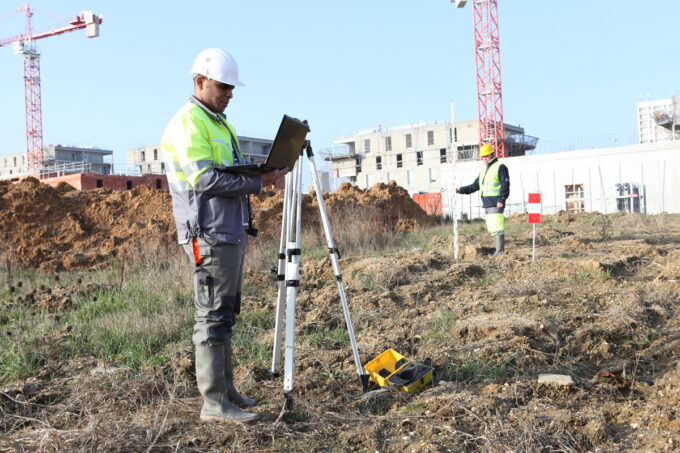There are several procedures to take care of before beginning with a new project, to ensure the project is being constructed in the proper location and partnering with the right stakeholders. A site study intended to understand the subsurface conditions for the location is one of the most crucial of these processes. Information regarding the soil and hydrologic conditions will be acquired during the inspection to establish whether the site suits the building one wants to develop.
A site study ensures that the structure will be safe for everybody, that the groundwater conditions are good, and that the physical characteristics of the soil and rock can support construction activities before beginning any new construction projects, including those for residential dwellings and commercial buildings, site investigation reports are required.
Different Stages To Investigate A Site

Source: boothventures.co.uk
There are four steps in the procedure for a site investigation.
1. Investigating The Site
A site survey is the first step in investigating a site. The location will be visually assessed. Additionally, this is when the region’s topographical and geological aspects will be compiled. During this phase, some of the main observations obtained are:
- One can determine the groundwater table’s location by examining the well on the building site.
- Springs, swamps and other similar characteristics
- the existence of drainage channels and garbage sites
- Whether there is any vegetation
- The composition and nature of the soil
- Detection of excessive flood levels at bridges and high-rise buildings
- In-depth analysis of the site’s aerial photos
- Records of previous landslides, floods, shrinkage fissures, and other dangers in the area
2. General Exploration Of Site
Site exploration for lightweight constructions, airports, motorways, and small projects occurs during this stage. Without investing a lot of money, the main goal is to generate an assessment of the existing sub-soil conditions.
A soil sample will be taken during the exploration and examined in a lab. The soil’s moisture content and density will be determined by this testing. Additionally, a compressive strength test will be performed. Penetration tests, sounding tests, and geophysical tests are a few of the on-site experiments during a general investigation. By conducting the tests, one can receive the data required to identify the strength traits and the soil density accurately.
3. Thorough Investigation Of the Site
A thorough site investigation is required if the project comprises complicated design plans and is intended to be large in scale. Dams, bridges, and high-rise buildings are some of the heaviest constructions to which extensive site exploration is applicable. Unlike a general site examination, a specialized site exploration method requires a large investment. It is advised to follow a general exploration if one has a small budget because it should be sufficient if the project is small.
Numerous on-site testing will be conducted during a proper investigation to ensure that a sizable building project can proceed without accident. The preliminary examinations carried out during the investigation are:
- Test of vane shear
- Test of plate load
- The laboratory examinations required for a detailed investigation include:
- Compressive strength testing to determine the precise qualities of the soil
- Tests of permeability
4. Report On Investigation And Exploration Of Sub-Soil
A sub-soil investigation and creating a report, which is extremely thorough and tells construction crews and developers everything they need to know about the construction site, is the last stage of a site inquiry. This report can be prepared only once the general or in-depth site exploration procedure has been completed. The report includes the following:
- Self-introduction
- The extent of the site examination
- A thorough explanation that emphasizes the type of building being constructed and the primary goal of the investigation
- Information about the location survey that was done
- The information on the site’s exploration, such as any sampling-related information and information about the number, location, and depth of the site’s boreholes
- The methods used during the exploration and the outcomes of these testing
- Information and findings from the laboratory tests
- Information on the location and level of the groundwater table
- Suggestions on how the site might be improved
- Details for different foundation types and the structures
The Reason For Conducting A Site Research

Source: owlcation.com
Any development project, including new construction, must conduct a site analysis. The reasons are
1. Reduces Costs
A site must be treated to ensure it is appropriate for a construction project. However, soil preparation might be optional if the site already allows for the structure one wants to build. One can determine whether soil treatment is required by doing a site investigation. If so, neighboring landowners might elect to chip in, thus saving from having to pay for the soil treatment out of pocket. Treating the soil beforehand will save money by lowering the likelihood of issues developing after construction.
2. Background Information About The Project’s Safety
Increasing project safety is the benefit of finishing a site investigation. Knowing the soil’s properties, a new structure might be constructed on the ground suitable for support. Certain soil types can be dangerous for new construction, endangering surrounding structures and employees. Ensuring dangers are effectively conveyed throughout the construction is one of OSHA’s safety recommendations for construction projects. Workers might only know the many hazards they could be exposed to if a site investigation is done.
3. Lessens Damage
One can lessen the likelihood of damage by doing a site investigation before the work. If a building is built on unfavorable soil, both the building’s foundation and the structure itself may eventually suffer harm. Various issues arise from failing to conduct a site investigation, whether due to a weak foundation or the ground exerting enough pressure around the foundation. The construction team will have the data they need to build a solid foundation to endure environmental stresses once they have the data from the site investigation.
Conclusion

Source: twitter.com
If one wants to make sure that the money for the development project is being invested correctly, investigating a site is imperative. With the findings of a site study, one may discover once it is too late that the soil is unstable or incompatible with the materials one utilizes for the foundation. Even though an extensive site investigation can be expensive, the advantages of getting one done much outweigh the expenses and risks.



